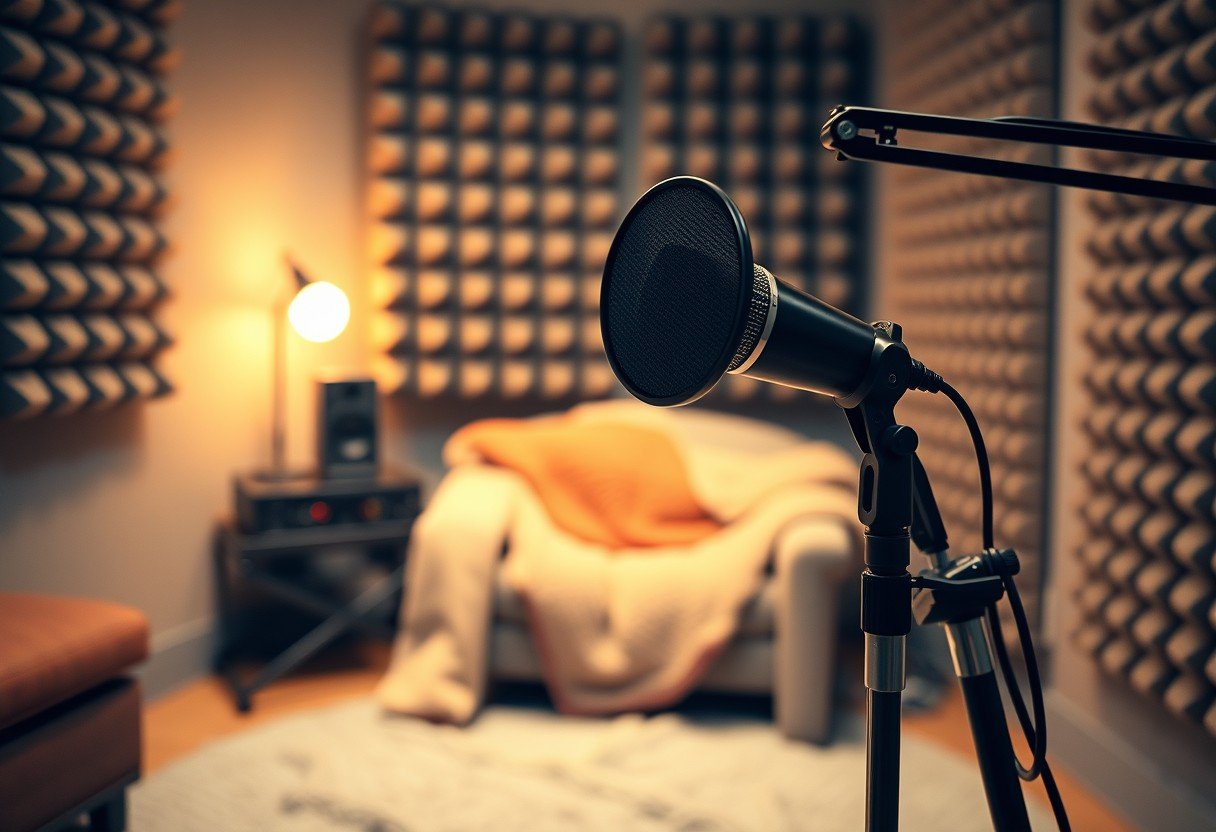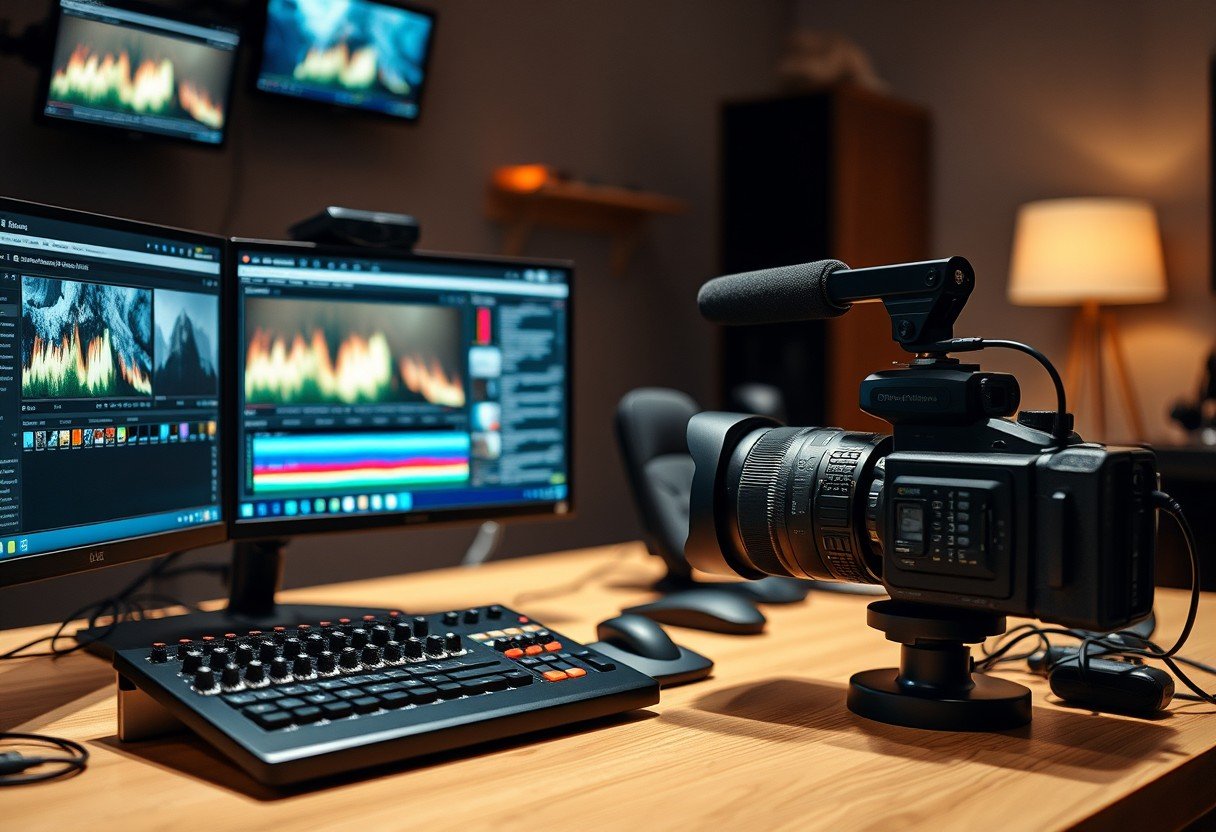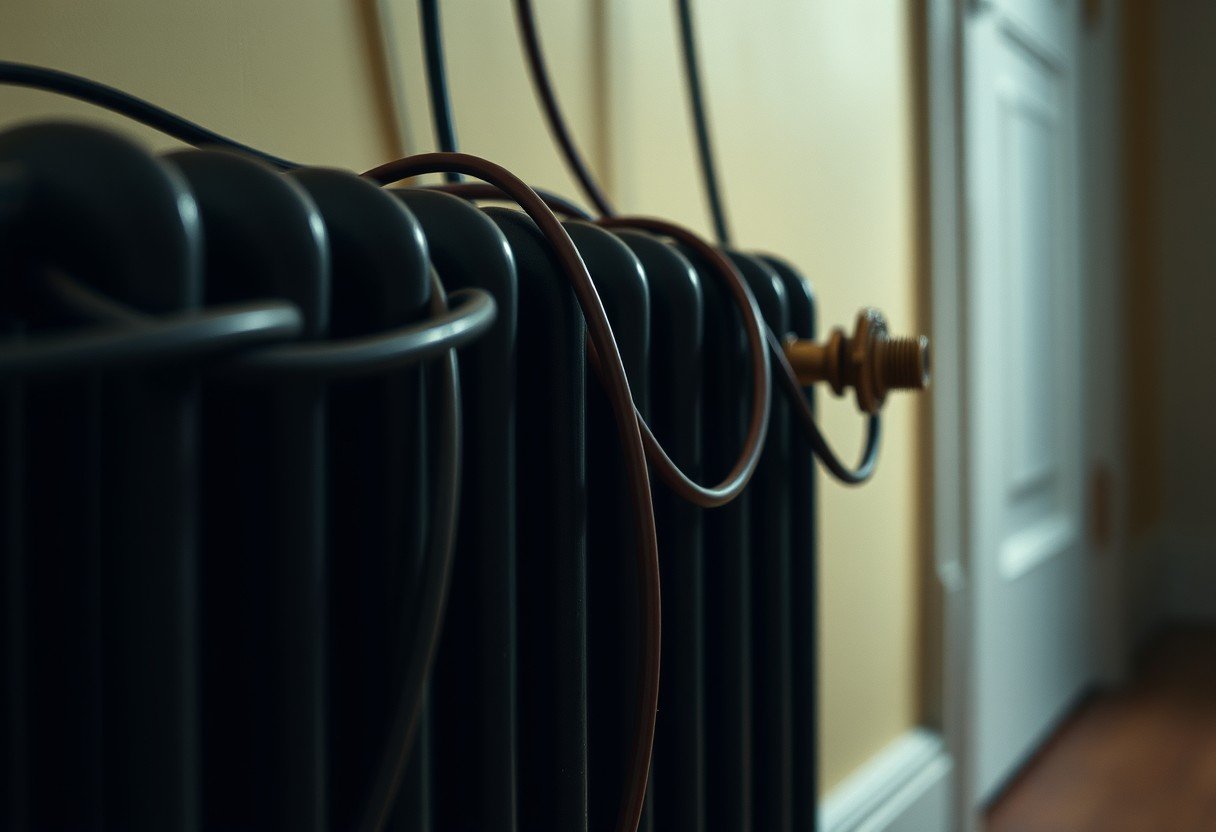Autonomous Sensory Meridian Response, or ASMR, relies on capturing very specific sounds to create that famous tingling sensation. The magic behind this immersive experience lies in specialized microphones designed to pick up every soft whisper, gentle tap, and delicate rustle. Understanding how these microphones work reveals the technology and artistry that transforms simple noises into a deeply relaxing and soothing journey for the listener.
What is ASMR and Why is Sound so Important?
ASMR is a relaxing, often sedative sensation that begins on the scalp and moves down the body. For those who experience it, this feeling is triggered by specific auditory or visual stimuli. Common sound triggers include soft speaking, tapping on surfaces, or the crinkling of paper.
The entire experience hinges on the quality and clarity of these sounds. A standard microphone might miss the subtle details that make ASMR effective. That’s why creators use special equipment. The quality of the microphone directly affects the clarity and detail of the sound, making it an essential component for ASMR artists.
Scientifically, ASMR may be linked to the release of brain chemicals like dopamine and endorphins, which promote feelings of comfort and happiness. By capturing trigger sounds perfectly, microphones help facilitate this positive physiological response, making them the most important tool in an ASMR creator’s kit.
Key Features That Make an ASMR Microphone Special
ASMR microphones are not like the ones used for singing or public speaking. They are engineered with specific features to capture the quietest sounds with extreme precision.
One of the most critical features is high sensitivity. This allows the microphone to pick up faint noises that would otherwise be lost. ASMR microphones have high sensitivity levels to pick up the faintest sounds, which are crucial for triggering ASMR responses in listeners. This means even the sound of a feather brushing against a surface can be recorded clearly.
These microphones are also directional, meaning they capture sound from specific directions. This helps create the illusion of a three-dimensional space, making the listener feel as if the sounds are happening all around them. A wide frequency response is another key feature, enabling the mic to record everything from the deep, low rumble of a rolling ball to the high-pitched crispness of a page turn.
Binaural Recording: The Secret to 3D ASMR Sound
If you’ve ever felt like an ASMR artist was whispering directly into your ear, you’ve likely experienced binaural recording. This technique is the secret ingredient for creating truly immersive ASMR audio.
Binaural recording uses two separate microphones, typically placed on a dummy head or spaced apart to mimic the distance between human ears. This setup captures sound exactly as your ears would, preserving the natural cues your brain uses to determine a sound’s direction and distance.
When you listen to a binaural recording with headphones, your brain is tricked into perceiving the sounds in a three-dimensional space. This is far more realistic than standard stereo sound, which only provides left and right audio channels. The result is a hyper-realistic experience where a tap might sound like it’s just behind you or a whisper feels like it’s moving from one ear to the other.
Common Types of Microphones Used for ASMR
While binaural setups are famous in the ASMR world, creators use several types of microphones depending on their style and budget. Each type offers different strengths for capturing those signature tingly sounds.
Choosing the right one can dramatically change the texture and feel of the final audio. For example, a condenser microphone is excellent for crisp, detailed sounds, while a lavalier mic is perfect for hands-free roleplay scenarios.
| Microphone Type | Best For | Key Feature |
|---|---|---|
| Binaural Microphones | Creating a 3D, immersive sound experience | Mimics human hearing with two capsules |
| Condenser Microphones | Capturing crisp, high-frequency sounds with detail | High sensitivity and wide frequency response |
| Lavalier Microphones | Hands-free recording and roleplays | Small, clip-on design for versatility |
| USB Microphones | Beginners and simple computer setups | Easy to use with plug-and-play functionality |
Many beginners start with a simple USB microphone due to its affordability and ease of use, while seasoned professionals often invest in high-end condenser or binaural microphones for superior audio quality.
Choosing the Right ASMR Microphone for You
Selecting a microphone depends on your goals and budget. Fortunately, there are great options available at every price point, so you can start creating ASMR content without breaking the bank.
For those just starting, budget-friendly options like the Blue Snowball or Maono AU-PM421 offer good sound quality and are incredibly user-friendly. These microphones are perfect for newcomers looking to experiment with different ASMR triggers without a large initial investment.
If you’re serious about producing high-quality content, professional choices like the Rode NT1-A or the ZOOM H5 recorder are worth considering. The Rode NT1-A is known for its extremely low self-noise, meaning it won’t add any unwanted hiss to your quiet recordings. The ZOOM H5 is a portable recorder that offers versatility for recording sounds both indoors and outdoors. Investing in professional gear can help your content stand out with impeccable audio that attracts a loyal audience.
Essential Tips for Recording High-Quality ASMR Audio
Having a great microphone is only half the battle. Your recording environment and technique play a huge role in the final quality of your ASMR audio. A quiet space is the most important starting point.
To improve your sound, consider some form of acoustic treatment. You don’t need a professional studio; simple things like hanging thick blankets or curtains on the walls can absorb sound and reduce echo, creating a more intimate and direct sound. Eliminating outside noise from traffic, pets, or appliances is crucial for a clean recording.
Your technique is just as important. Here are a few key practices to get the best results:
- Experiment with Microphone Placement. Moving closer to the mic will create a more intimate, present sound, while moving farther away can create a sense of space and atmosphere. Try different angles to see how they change the sound.
- Use a Pop Filter. This simple screen placed in front of the microphone prevents the harsh “plosive” sounds created by letters like ‘p’ and ‘b’, which can be jarring for listeners.
- Monitor Your Audio in Real Time. Wear headphones while you record to hear exactly what the microphone is picking up. This helps you catch unwanted noises and adjust your performance on the fly.
- Set Your Gain Levels Correctly. Gain is the microphone’s input level. Set it high enough to capture quiet sounds but low enough to avoid distortion or “clipping” on louder sounds.
By combining the right gear with a good environment and solid technique, you can create captivating ASMR content that provides deep relaxation for your audience.
Frequently Asked Questions about ASMR Microphones
What is the main difference between a regular microphone and an ASMR microphone?
The main differences are high sensitivity and a low self-noise level. ASMR microphones are designed to clearly capture extremely quiet and subtle sounds without adding any background hiss, which is essential for creating a clean and immersive experience.
Can I start making ASMR content with my phone’s microphone?
Yes, you can definitely start with your phone’s microphone to practice techniques and find your style. However, to achieve the clarity and immersive quality that listeners expect from ASMR, you will eventually want to upgrade to a dedicated external microphone.
Why is binaural audio so popular for ASMR?
Binaural audio is popular because it uses two microphones to replicate how human ears hear sound in a three-dimensional space. When listened to with headphones, it creates a highly realistic and immersive experience, making listeners feel like they are in the same room as the creator.
How do I reduce background noise in my ASMR recordings?
To reduce background noise, choose the quietest time and place to record. Turn off all fans, air conditioners, and appliances. You can also use soft materials like blankets or foam panels in your room to absorb sound and prevent echo.
What are the most important microphone features to look for?
The most important features for an ASMR microphone are high sensitivity to pick up soft sounds, a low self-noise level to ensure the recording is clean, and a directional pattern (like cardioid or binaural) to help create a sense of space.








Leave a Comment